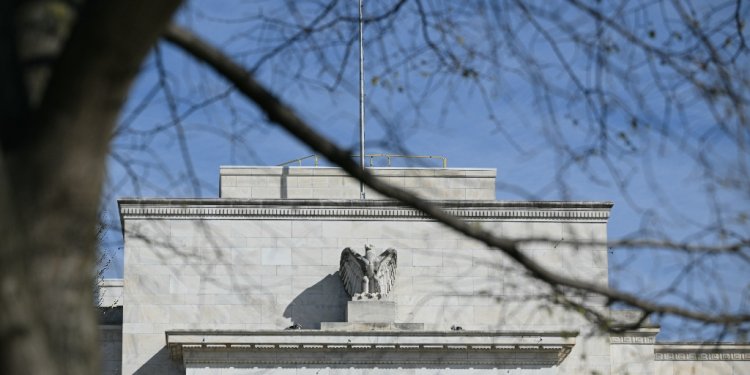(AFP) – The US Federal Reserve voted Wednesday to hold interest rates at a 23-year high for a fifth consecutive meeting, while signaling it still expects to make three cuts this year.
The Fed’s decision to keep its key lending rate between 5.25 percent and 5.50 percent lets policymakers “carefully assess incoming data, the evolving outlook and the balance of risks,” the central bank said in a statement.
Last year, the Fed’s policies proved to be a success: inflation eased dramatically from the multi-decade highs seen in 2022 toward the Fed’s long-term two percent target, while the United States was able to avoid a recession thanks to unexpectedly strong economic growth.
But 2024 has been more challenging, with the country seeing a small uptick in the pace of monthly inflation — renewing fears that interest rates will have to remain high for longer to bring prices under control.
“Inflation is still too high,” Powell told reporters after the vote, adding: “ongoing progress in bringing it down is not assured, and the path forward is uncertain.”
But despite the recent uptick, Powell said this year’s inflation data “haven’t really changed the overall story, which is that of inflation moving down gradually on a sometimes bumpy road toward two percent.”
– Growth forecast lifted –
Alongside its rate decision, Fed policymakers also updated their economic forecasts on Wednesday, sharply upgrading the US growth outlook for this year to 2.1 percent, from 1.4 percent in December. Policymakers left the headline inflation forecast unchanged, but slightly raised the outlook for annual so-called “core” inflation — which excludes energy and food prices — to 2.6 percent. Members of the rate-setting Federal Open Market Committee (FOMC) also left the median projection for interest rates at end-2024 at the midpoint between 4.50 and 4.75. This means they still expect 0.75 percentage points of cuts before the end of the year, which would likely translate into three 0.25 percentage point cuts. Some analysts had predicted that the inflationary picture, and the continued strength of the US economy, could lead FOMC to reduce the number of cuts they expect to see this year from three to two, which ultimately did not transpire on Wednesday.
– Change of tune –
Back in December, the FOMC prediction of three cuts this year raised hopes in financial markets that the first reduction could come as early as March. But in the weeks that followed, Fed officials used public appearances to caution against moving too quickly and reigniting inflation, stressing that any decisions on rate cuts would be “data-dependent.” Within weeks, market expectations among traders and many analysts were pushed back from March to June, or even later. Futures traders currently assign a probability of more than 70 percent that the Fed will start cutting interest rates by mid-June, rising to 85 percent by the end of July, according to data from CME Group. “We retain our baseline call that the FOMC will initiate a methodical, every-other-meeting cutting cycle in June, continuing through 2025,” economists at Barclays wrote in a recent note to clients ahead of Wednesday’s decision. In another recent investor note, economists at Goldman Sachs pared back the number of cuts they expect this year from four to three, “mainly because of the slightly higher inflation path.”
The Fed’s interest rate decision comes shortly after the Bank of Japan raised interest rates for the first time in 17 years, in a move that cheered financial markets in Tokyo but sent the yen falling against the dollar. Other central banks, including the Bank of England, are scheduled to announce their interest rate decisions later this week.
– Daniel AVIS
© 2024 AFP





